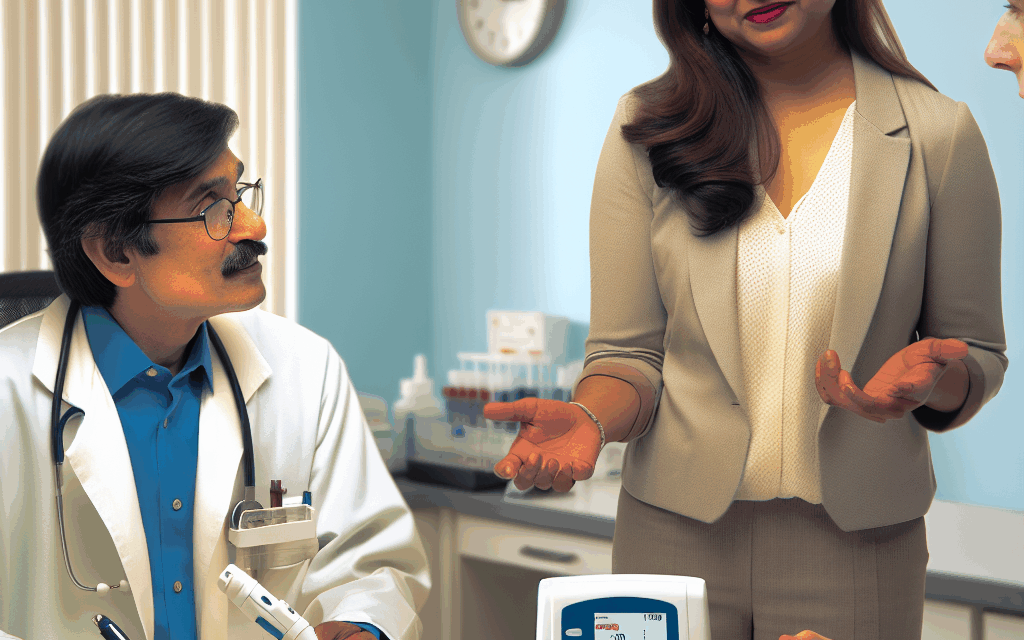Summary
Diabetes management requires precise monitoring of blood glucose levels. Point-of-care (POC) testing devices offer the advantage of providing immediate results, aiding timely therapeutic decisions. However, it’s essential to integrate these devices cautiously alongside traditional laboratory tests to ensure robust diabetes management.
Key Takeaways
- POC testing provides real-time results, enhancing patient compliance and allowing immediate therapeutic actions.
- The speed and convenience of POC testing can significantly improve patient satisfaction.
- Laboratory-based testing ensures accuracy, standardization, and rigorous quality control protocols.
- Exclusive reliance on POC devices for diagnosis and management may not be advisable.
- Combining POC and laboratory testing can optimize diabetes management strategies.
POC testing devices have changed how people manage diabetes by offering real-time blood glucose monitoring. The rapid feedback enables patients and healthcare providers to make prompt adjustments to dietary or medicinal interventions, improving patient outcomes. For many diabetic individuals, the convenience and ease of use of these devices encourage more consistent monitoring, fostering better compliance with treatment plans.
The immediacy of POC devices addresses a critical challenge in diabetes management: patient adherence to prescribed monitoring schedules. The ability to perform these tests outside a clinical setting without advanced technical expertise makes them accessible to a diverse range of patients. This ease of use is crucial for encouraging individuals who might otherwise skip mandatory testing due to fear, forgetfulness, or inconvenience.
However, while the benefits of accessing quick results cannot be overstated, these devices also have limitations that need addressing. One of the major concerns revolves around the accuracy and reliability of results. Unlike laboratory tests, which are subject to strict quality control measures and standardization, POC devices vary in precision across brands and models. This variability can occasionally result in misinterpretations of a patient’s glycemic control, highlighting the need to integrate multiple data sources for comprehensive management.
Complementary Role of Laboratory Testing
Although POC testing offers distinct advantages, laboratory-based testing remains the gold standard in diabetes diagnosis and management. Laboratories employ advanced analytical techniques that ensure high accuracy levels, and results are subjected to rigorous quality assurance protocols. These controls assure that results can be trusted for critical decisions in patient care.
The comprehensive data capabilities of laboratory informatics systems allow for thorough analysis. These systems store and correlate patient data across multiple tests over time, helping healthcare providers identify long-term trends and individual patient patterns in glucose control. The structured nature of these data systems supports research and can guide broader public health strategies.
Despite being slower and less convenient than POC tests, laboratory tests’ standardization enables cross-comparison against wide-ranging clinical data, ensuring that results are benchmarked against recognized clinical standards. The information provided by these tests is indispensable for verifying POC results, particularly when initial readings trigger suspicion of discrepancies.
Given the strengths and limitations of both approaches, many healthcare professionals advocate for an integrated testing strategy. By combining immediate POC testing with periodic laboratory evaluations, patients receive the benefit of quick monitoring while ensuring accuracy and reliability are upheld through definitive lab results. This hybrid model empowers both patients and healthcare providers to make informed decisions while safeguarding against potential inaccuracies.
Conclusion
Integrating point-of-care testing with traditional laboratory methodologies optimizes diabetes management by blending immediacy with accuracy. Real-time POC results aid compliance and prompt interventions, while laboratory testing ensures precision and data reliability. This combined approach provides balanced solutions for effective blood glucose control, driving improved patient outcomes in diabetes care.




